Buying food in bulk is a cost-effective way to save money on groceries. It is a strategy that has been used by many for years, and it offers numerous benefits.
In this ultimate guide to bulk food purchasing, we will explore why buying food in bulk is worth it, how it can save you money, and the best strategies for buying food in bulk.
Buying food in bulk is an essential part of building a home emergency kit for disaster preparedness.
Key Takeaways:
- Buying food in bulk is a cost-effective way to save money on groceries.
- It reduces the number of trips to the store and simplifies meal planning.
- Purchasing in bulk can save an average household approximately $2,050 per year.
- Proper storage and organization are essential for maintaining the quality of bulk food purchases.
- Maximize the benefits of bulk food purchases by planning meals and stocking up on non-perishable items.
Table of Contents
Why Should You Buy Food in Bulk?
Buying food in bulk offers several benefits, with one of the main advantages being the ability to save money.
Studies have shown that purchasing food in bulk can save the average household approximately $2,050 per year.
This significant cost savings is due to the fact that bulk food is often sold at a lower cost per unit compared to smaller packages.
By buying in bulk, you can stretch your grocery budget and enjoy substantial savings over time.
In addition to saving money, buying food in bulk also offers convenience. When you purchase in larger quantities, you reduce the number of trips you need to make to the store.
This not only saves you time but also minimizes the hassle of frequent grocery shopping.
With fewer trips, you can spend more time on other activities that matter to you.
Furthermore, buying food in bulk can simplify your meal planning process.
By having a variety of items readily available in your pantry, you can easily create versatile and nutritious meals. Bulk food purchases also help to reduce waste since you can choose the exact quantities you need.
This not only saves money but also contributes to a more sustainable and environmentally-friendly lifestyle.
| Benefits of Buying Food in Bulk: |
|---|
| Save Money: Purchasing food in bulk can lead to significant cost savings, cutting your grocery expenses by thousands of dollars per year. |
| Convenience: Buying in bulk reduces the number of trips to the store, saving you time and effort. |
| Simplified Meal Planning: Having a wide selection of bulk food items allows for easy meal preparation and reduces waste. |
| Environmental Sustainability: Buying in bulk helps to minimize packaging waste and promotes a more eco-friendly lifestyle. |
How to Buy Food in Bulk
When it comes to buying food in bulk, there are a few key factors to consider.
Firstly, you need to know where to shop.
Popular options include Costco, Sam’s Club, and BJ’s Wholesale Club. Each store offers different membership options and additional services, so it’s important to do your research and choose the one that best suits your needs.
Once you’ve chosen a store, it’s important to know how to assess a deal and apply effective buying strategies.
This includes knowing which items are worth buying in bulk and how to properly store and organize your bulk food purchases.
To help you make the most of your bulk food shopping experience, here are some helpful tips:
1. Make a List
Before heading to the store, make a list of the items you need to buy in bulk.
This will help you stay focused and avoid unnecessary purchases. It’s also a good idea to check your pantry and take note of the items you frequently use.
2. Compare Prices
Compare prices between different stores to ensure you’re getting the best value for your money.
Keep track of unit prices to determine which store offers the most affordable options.
3. Check Expiration Dates
When buying in bulk, it’s essential to check expiration dates to ensure you’re getting fresh products that won’t go to waste.
Avoid purchasing items that are close to their expiration date, especially if you won’t be able to consume them before they expire.
By comparing prices and checking expiration dates, you can make informed decisions and maximize your savings when buying food in bulk.
Now that you’re equipped with these bulk food shopping tips, you can confidently navigate the aisles and make the most of your bulk food purchases.
Remember to prioritize the items you frequently use, compare prices between stores, and check expiration dates to ensure you’re getting the best value and freshest products.
Happy bulk food shopping!
Top Food Items that Save Money when Bought in Bulk
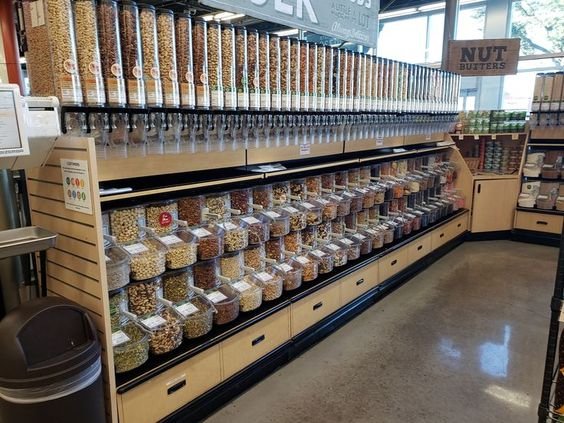
When it comes to buying food in bulk, there are certain items that offer significant savings.
Not only do these items help stretch your grocery budget, but they also provide healthy options for your meals.
Here are some top food items that can save you money when bought in bulk:
Frozen Blueberries
Buying frozen blueberries in bulk can save you over $100 per year.
These versatile berries are packed with antioxidants and can be used in smoothies, baked goods, or enjoyed as a healthy snack.
Plus, since they’re frozen, they have a longer shelf life, allowing you to enjoy them throughout the year.
Ground Turkey
Ground turkey is a lean and budget-friendly alternative to ground beef.
When bought in bulk, it can save you significant money on your grocery bill.
Use it to make delicious meatballs, tacos, or as a substitute in your favorite recipes that call for ground meat.
Tomatoes
Fresh tomatoes are a staple in many dishes, and buying them in bulk allows you to save money while enjoying their flavor and nutritional benefits.
Whether you use them in salads, sauces, or sandwiches, having a stock of tomatoes on hand ensures you always have a versatile ingredient to work with.
GF Bread
For those following a gluten-free diet, buying gluten-free bread in bulk can help save money.
GF bread can be quite expensive when purchased individually, but buying in bulk can provide significant savings.
Stock up on your favorite brand and freeze extra loaves for later use.
| Food Item | Savings |
|---|---|
| Frozen Blueberries | $100 per year |
| Ground Turkey | Significant savings |
| Tomatoes | Save money on staple ingredient |
| GF Bread | Cost-effective option for gluten-free diet |
Meat Savings in Bulk Purchases

Buying meat in bulk can lead to significant savings on your grocery bill.
Not only does it help you save money, but it also ensures that you always have a steady supply of meat on hand for your family’s meals.
There are various cuts of meat that offer substantial savings when purchased in bulk, allowing you to enjoy high-quality proteins without breaking the bank.
One of the top meat choices for bulk purchases is top loin pork chops, which can save you an impressive 91% compared to buying smaller quantities.
Boneless, skinless chicken cuts are also a great option, offering savings of up to 87%. Other cuts of chicken, such as drumsticks, can save you around 70% when bought in bulk.
To ensure the freshness and quality of your bulk meat purchases, it’s essential to follow proper storage and handling practices.
Store meat in the refrigerator or freezer according to its recommended storage guidelines.
Additionally, it’s important to separate raw meat from other items and cook it thoroughly to ensure food safety.
By purchasing meat in bulk and handling it properly, you can enjoy substantial savings while maintaining the quality of your meals.
Table: Bulk Meat Savings
| Meat Cuts | Savings |
|---|---|
| Top Loin Pork Chops | 91% |
| Boneless, Skinless Chicken Cuts | 87% |
| Chicken Drumsticks | 70% |
Fish and Seafood Deals in Bulk Buying
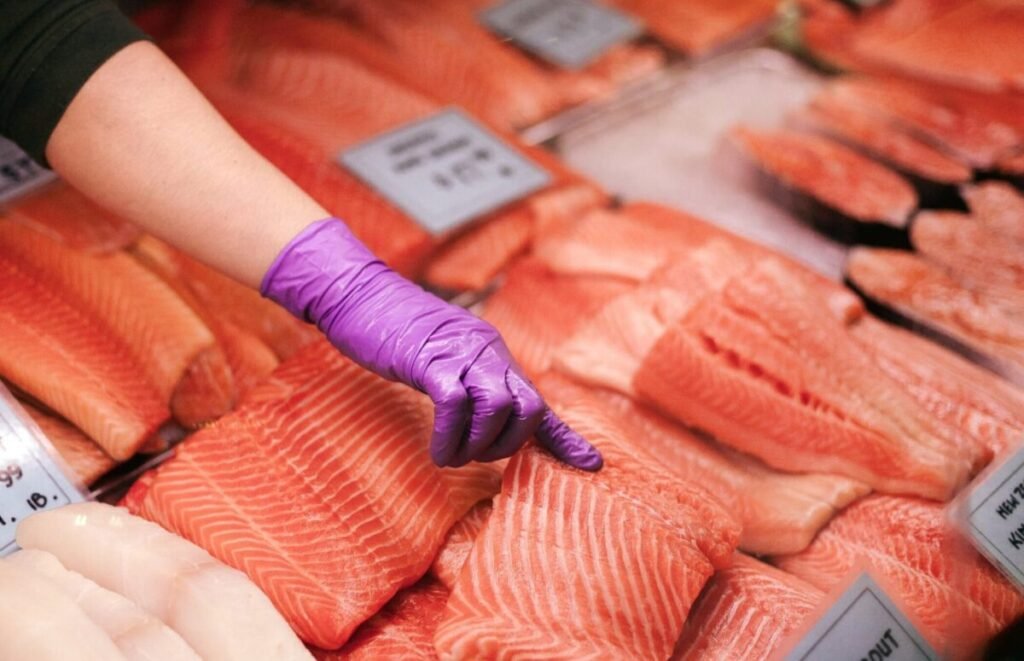
When it comes to buying food in bulk, fish and seafood are not to be overlooked.
Not only can you take advantage of significant savings, but you can also enjoy the health benefits of these protein-packed options.
Buying fish in bulk allows you to stock up on your favorite varieties while keeping your budget in check.
One of the top deals in bulk buying is tilapia fillets. When purchased in bulk, you can save an impressive 83%.
This versatile fish is not only cost-effective but also a great source of lean protein. Another popular option is salmon fillets, which offer a savings of 79% when bought in bulk.
Rich in omega-3 fatty acids, salmon provides numerous health benefits and can be used in a variety of delicious recipes.
For those who enjoy a variety of fish, select cuts like snapper and cod can save you around 66% when purchased in bulk.
Buying fish and seafood in bulk is not only a smart financial decision but also a convenient way to incorporate nutritious options into your meal planning.
With a well-stocked freezer, you can easily prepare healthy and delicious seafood dishes whenever the mood strikes.
Fish and Seafood Savings in Bulk Buying
| Fish/Seafood | Bulk Buying Savings |
|---|---|
| Tilapia Fillets | 83% |
| Salmon Fillets | 79% |
| Select Cuts of Fish (Snapper, Cod, etc.) | 66% |
By taking advantage of bulk seafood savings, you can enjoy restaurant-quality fish and seafood without breaking the bank.
Whether you’re a fan of tilapia, salmon, or a variety of fish, buying in bulk is a win-win for your wallet and your taste buds.
Nut and Grain Savings in Bulk Purchases
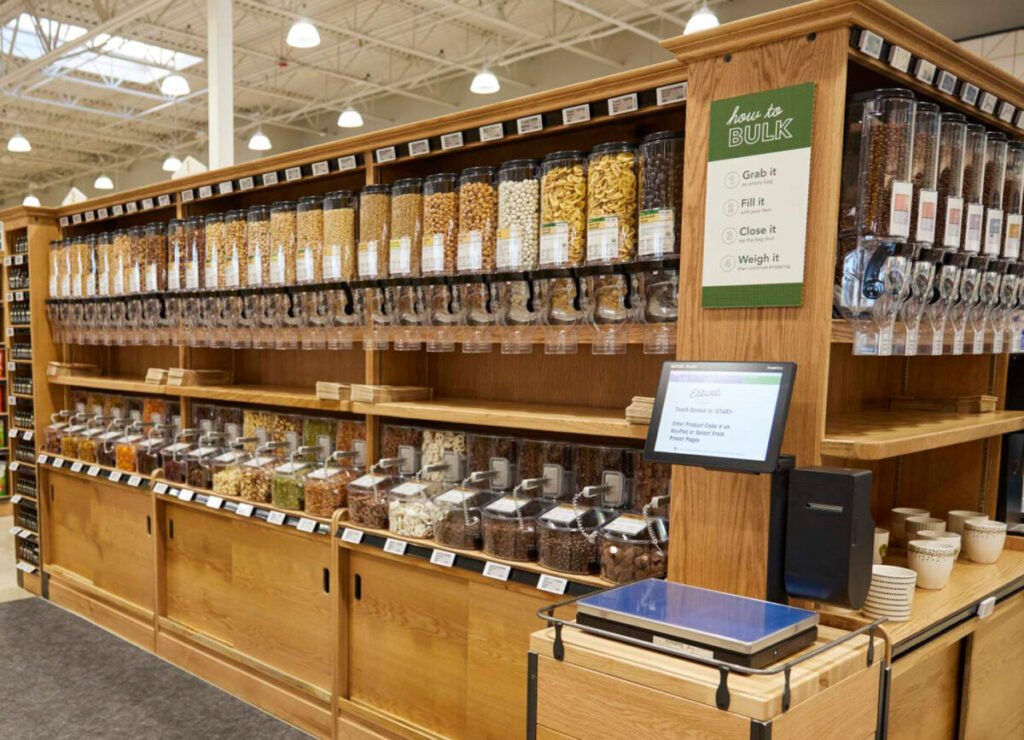
Buying nuts and grains in bulk can offer significant savings on your grocery bill.
Not only are these pantry staples nutritious and versatile, but purchasing them in larger quantities can also help you save money in the long run.
Here are some key reasons why buying nuts and grains in bulk is a smart choice:
- Cost savings: When you buy nuts and grains in bulk, you typically pay a lower price per pound compared to buying smaller packages. This can result in substantial savings over time, especially if you consume these items regularly.
- Reduced packaging waste: Buying in bulk helps to reduce packaging waste because you’re not purchasing multiple smaller packages. This environmentally-friendly choice can contribute to a greener lifestyle and a healthier planet.
- Fresher and better quality: Nuts and grains bought in bulk are often fresher compared to pre-packaged options. This is because they are often sourced from suppliers with high turnover, ensuring that you get the freshest products available.
When buying nuts and grains in bulk, it’s important to properly store them to maintain their freshness and quality.
Keep them in airtight containers in a cool, dry place away from direct sunlight and moisture.
Proper storage will help prolong their shelf life and preserve their taste and texture.
Nut and Grain Savings
| Product | Savings |
|---|---|
| Macadamia Nuts | Up to 78% |
| Walnuts | Up to 71% |
| Brown Rice | Up to 60% |
As shown in the table above, buying macadamia nuts and walnuts in bulk can save you up to 78% and 71% respectively compared to purchasing smaller packages.
Brown rice, a popular grain choice, can also provide savings of up to 60% when bought in bulk.
By incorporating bulk nuts and grains into your diet, you can enjoy the benefits of cost savings, reduced packaging waste, and fresher products.
Whether you’re snacking on nuts or cooking up a delicious rice dish, buying in bulk is a smart and economical choice.
Other Food Items with Bulk Savings
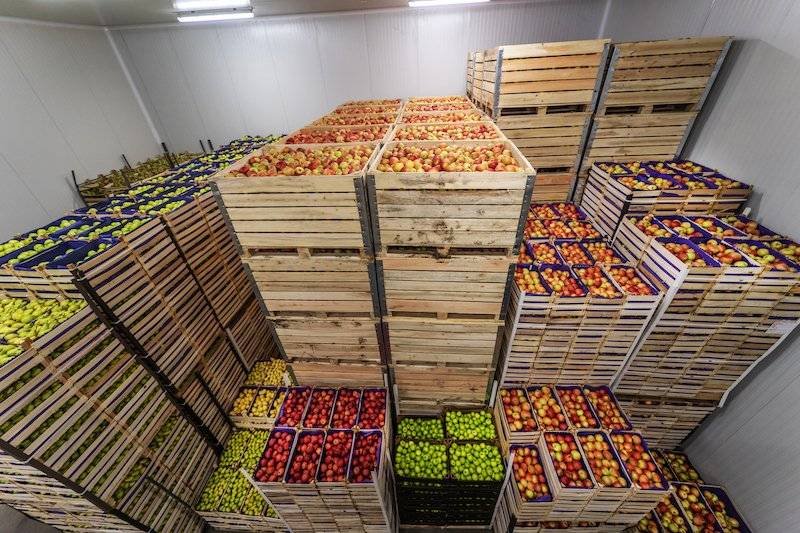
When it comes to buying pantry staples in bulk, there are several other food items that offer significant savings.
From organic ginger root to uncooked tortillas, these items can help you save up to 70% on your grocery bill.
Fruits and Vegetables
- Mangoes: Buying mangoes in bulk can save you up to 65% compared to purchasing individual fruits. These tropical delights are not only delicious but also packed with vitamins and antioxidants.
- Romaine Hearts: Stocking up on romaine hearts can save you around 60%. These crisp and refreshing salad greens are perfect for adding a healthy crunch to your meals.
- Onions: Onions are a pantry staple that can be utilized in a variety of dishes. Buying them in bulk can save you up to 50% and ensure you always have this versatile ingredient on hand.
Dairy and Cheese
- Processed Cheese: Whether you prefer sliced or shredded, buying processed cheese in bulk can save you up to 40%. Perfect for sandwiches, snacks, or melting over your favorite dishes.
- Almond Milk: Almond milk is a popular dairy alternative that can be expensive when purchased in smaller quantities. Buying it in bulk can save you up to 30% and provide you with a steady supply of this nutritious beverage.
Staples and Grains
- Potatoes: Potatoes are a versatile and budget-friendly staple that can be used in a variety of dishes. Buying them in bulk can save you up to 40% and ensure you always have this versatile ingredient on hand.
- White Rice: White rice is a staple in many kitchens and can be significantly cheaper when purchased in bulk. Buying it in larger quantities can save you up to 30% compared to smaller packages.
- GF Bread: For those following a gluten-free diet, buying GF bread in bulk can lead to significant savings. You can save up to 20% by purchasing larger quantities, ensuring you always have a delicious and convenient option on hand.
| Food Item | Savings Percentage |
|---|---|
| Mangoes | Up to 65% |
| Romaine Hearts | Around 60% |
| Onions | Up to 50% |
| Processed Cheese | Up to 40% |
| Almond Milk | Up to 30% |
| Potatoes | Up to 40% |
| White Rice | Up to 30% |
| GF Bread | Up to 20% |
By buying these pantry staples in bulk, you can enjoy significant savings while ensuring you always have a well-stocked pantry.
Whether you’re looking to save money or simply enjoy the convenience of having essential ingredients on hand, buying in bulk is a smart choice.
How to Store Bulk Food Purchases
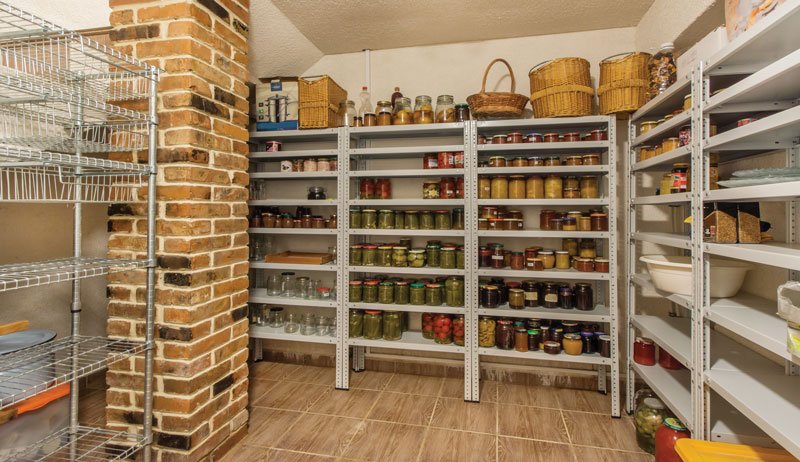
Proper storage and organization are crucial when it comes to maximizing the benefits of buying food in bulk.
By following these tips, you can ensure that your bulk food purchases stay fresh, organized, and ready to use when you need them.
1. Find the Right Storage Space
When storing bulk food, it’s important to find a cool, dry place away from direct sunlight and moisture.
A pantry or a dedicated storage area in your kitchen is ideal.
Avoid storing bulk food in the garage or basement, as these areas can be prone to temperature fluctuations and humidity.
2. Invest in Airtight Containers
Using airtight containers or resealable bags is essential for maintaining the freshness of your bulk food purchases.
These containers help to keep out moisture and pests, preserving the quality of your food for longer periods.
Labeling the containers with the contents and purchase date can also help with organization and inventory management.
3. Rotate Your Stock
To prevent food waste and ensure that older items are used first, it’s important to practice rotation.
Place newly purchased items at the back of the storage area and move older items to the front.
This way, you’ll always use the oldest items first, reducing the chance of items expiring or spoiling.
4. Maintain an Inventory
Keeping track of your bulk food purchases with an inventory can help you stay organized and prevent overbuying.
Maintain a list of what you have on hand, including quantities and expiration dates.
This way, you can easily plan meals and grocery shopping based on your inventory, ensuring that you make the most of your bulk purchases.
By following these storage and organization tips, you can make the most of your bulk food purchases and enjoy savings without sacrificing the quality and freshness of your ingredients.
Tips for Maximizing Bulk Food Savings

If you’re looking to save money with bulk food purchases, here are some valuable tips to help you maximize your savings:
- Create a Meal Plan: Plan your meals around the bulk food items you have purchased. This will ensure that you use them efficiently and avoid any potential waste. By having a clear plan, you can also make a shopping list based on the ingredients you already have, further reducing unnecessary purchases.
- Stock Up on Non-Perishables: Non-perishable items like rice, pasta, canned goods, and spices have a long shelf life. Take advantage of bulk discounts to stock up on these items, as they can be the foundation of many meals and help you save money in the long run.
- Utilize Freezer-Friendly Foods: Many bulk food purchases, such as meat and produce, can be frozen for future use. Take advantage of this by dividing them into smaller portions and storing them in freezer-safe bags or containers. This way, you can extend the lifespan of your bulk purchases and avoid spoilage.
- Consider Meal Prepping: Allocate some time each week to batch cook and meal prep using your bulk food purchases. By preparing meals in advance and portioning them out, you’ll have convenient and cost-effective options ready to go, reducing the temptation to eat out or order takeout.
By following these tips, you can truly make the most of your bulk food purchases and experience significant savings.
Remember to always check the unit prices, compare them to smaller package options, and calculate the cost per serving to ensure you’re getting the best value for your money.
Sample Meal Plan
| Day | Breakfast | Lunch | Dinner |
|---|---|---|---|
| Monday | Yogurt Parfait with Fresh Berries | Quinoa Salad with Grilled Chicken | Teriyaki Beef Stir-Fry with Brown Rice |
| Tuesday | Scrambled Eggs with Spinach and Tomatoes | Peanut Butter and Banana Sandwich | Grilled Salmon with Roasted Vegetables |
| Wednesday | Oatmeal with Almond Butter and Raisins | Black Bean and Corn Salad | Chicken Fajitas with Whole Wheat Tortillas |
This sample meal plan showcases how you can incorporate a variety of bulk food items into your daily meals.
By planning ahead, you can make the most of your bulk purchases while enjoying delicious and cost-effective meals throughout the week.
Conclusion
In conclusion, I hope this bulk food buying guide has provided you with valuable insights on how to save money and plan affordable meals for your family.
Buying food in bulk is not only a cost-effective strategy but also offers convenience and environmental benefits.
By purchasing food in bulk, you can significantly reduce your grocery expenses and cut down on unnecessary trips to the store.
This not only saves you money but also frees up your time for other activities.
Creating a family meal plan that incorporates your bulk food purchases can help you maximize your savings and ensure that nothing goes to waste. By following the tips and strategies outlined in this guide, you can enjoy a well-stocked pantry while sticking to your budget.
So, start exploring your local bulk food suppliers and take advantage of the savings and benefits that come with buying food in bulk. Your wallet and your family will thank you for it!
FAQ
Why should I buy food in bulk?
Buying food in bulk offers numerous benefits, including saving money, reducing store trips, simplifying meal planning, and being environmentally-friendly.
Where should I shop for bulk food?
Popular options for bulk food shopping include Costco, Sam’s Club, and BJ’s Wholesale Club. Research each store to find the best fit for your needs.
How can buying food in bulk save me money?
Purchasing food in bulk often results in lower cost per unit compared to smaller packages. Studies show that it can save an average household approximately $2,050 per year.
What are some top food items that offer savings when bought in bulk?
Examples of food items that provide significant savings when purchased in bulk include frozen blueberries, ground turkey, tomatoes, GF bread, almond milk, onions, white rice, and many more.
How should I store bulk food purchases?
It’s important to store bulk food items in a cool, dry place, away from direct sunlight and moisture. Using airtight containers or resealable bags can help maintain freshness, and proper labeling and rotation can prevent waste.
Can I save money on meat by buying in bulk?
Yes, buying meat in bulk can offer significant savings. For example, top loin pork chops and boneless, skinless chicken cuts can save you 91% and 87% respectively when bought in bulk.
Are there any savings on fish and seafood when bought in bulk?
Yes, bulk buying can also offer substantial savings on fish and seafood. Tilapia fillets, salmon fillets, and select cuts of fish can save you 83%, 79%, and 66% respectively when purchased in bulk.
What are some pantry staples that are cheaper when purchased in bulk?
Pantry staples like macadamia nuts, walnuts, and brown rice can offer savings of up to 78% and 71% respectively when bought in bulk.
Can I find savings on other food items besides meat, fish, and grains?
Yes, other food items like organic ginger root, uncooked tortillas, mangoes, romaine hearts, processed cheese, and potatoes can also save you up to 70% when purchased in bulk.
How can I maximize the benefits of my bulk food purchases?
Planning meals, creating shopping lists based on your bulk purchases, stocking up on non-perishable items, and practicing meal prepping and batch cooking can help you make the most of your savings and ensure efficient use of your bulk purchases.
Can buying food in bulk help with family meal planning?
Yes, buying food in bulk simplifies meal planning by having a well-stocked pantry and reducing the need for frequent store trips. It can save you time and make family meal planning more convenient.

